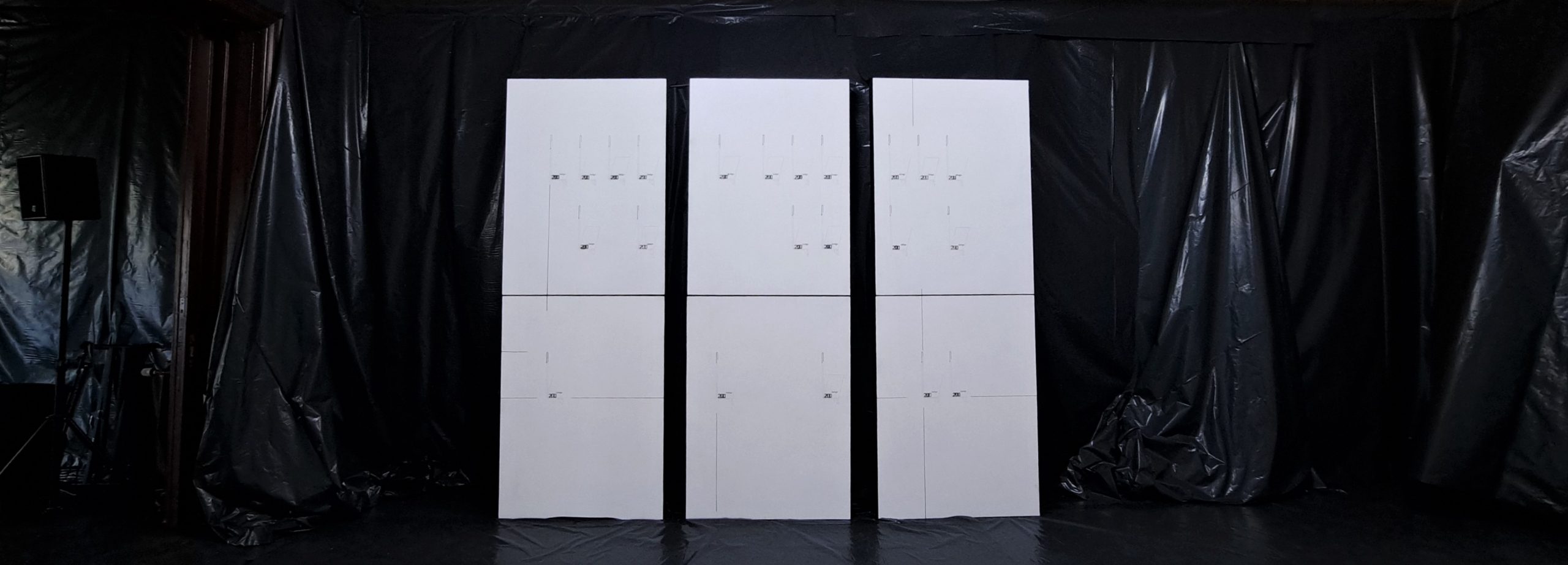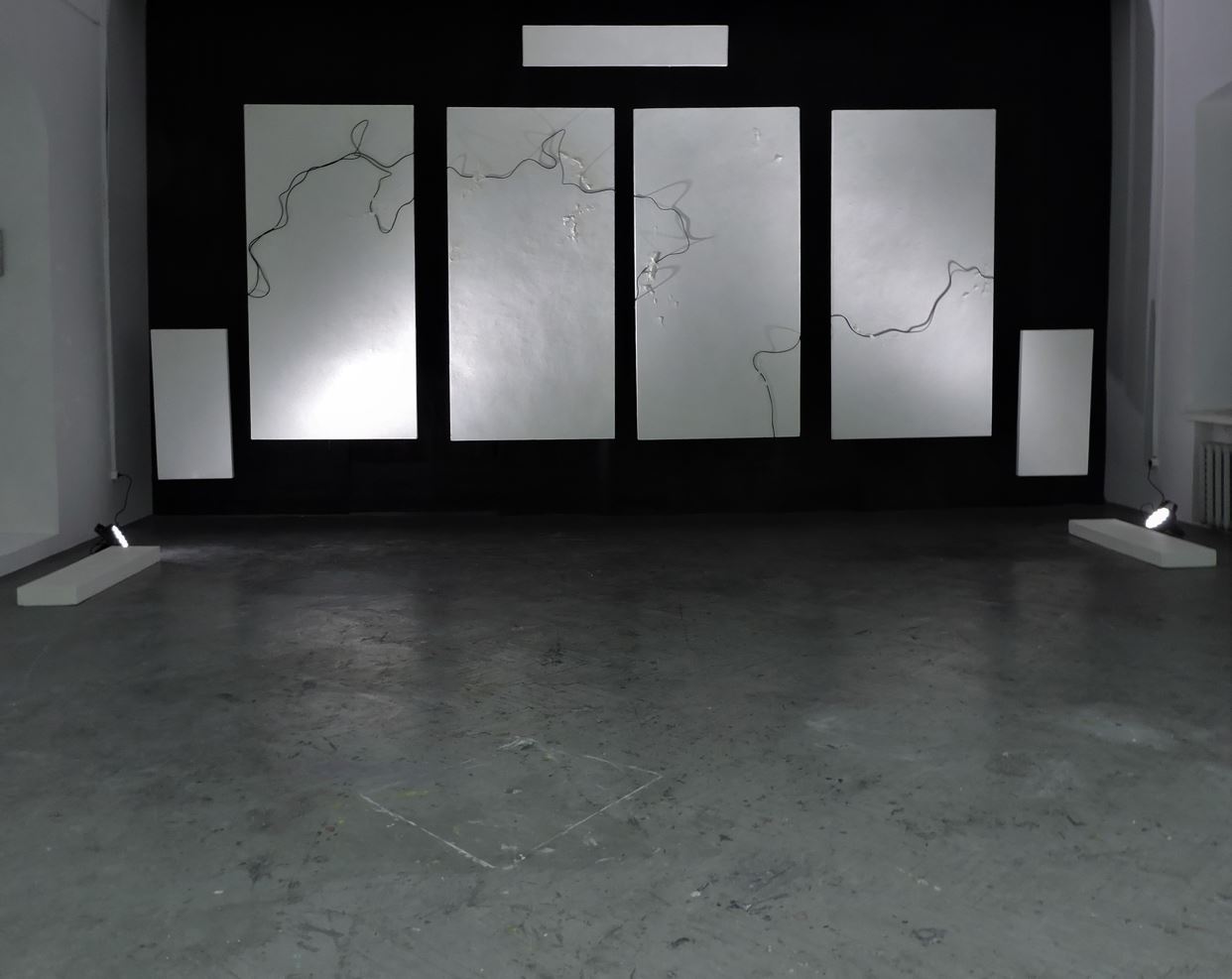“Instant”
chipboard, gesso, acryl
Sofiia Yesakova CV
|
Born 1998, Kyiv, UA Education 2022 Akademie der Bildenden Künste, München, Prof. Gregor Hildebrandt Selected group exhibitions |
|
2017 Solo exhibitions 2022 Residences 2018 |
|
«Velikyy Pereviz» art residence, Poltavs’Ka Oblast’, Ukraine 2021 “Art Shelter Berlin”, Berlin, Germany
|
ARTIST STATEMENT
My name is Sofiia Yesakova. I am ukrainian artist from Berlin.
. For me, the assembly of artistic and research practices becomes a kind of navigator in the radically new conditions of the
coming anthropocene. Accordingly, the total ecological crisis mobilizes the efforts of both scientists and artists. I support Hegel’s statement that the Pride of Generic Exclusivity must be replaced by the understanding that humans are only one of the “natural formations.” A philosophical and scientific rethinking of what man is in general and what his role is on this planet is necessary.
The project I am currently working on is called «CARGO-200. EXPERIMENTAL PROJECTIONS ON THE SURFACE.» Cargo 200 is a term in military jargon. A military designation for transporting home the dead bodies from war. To
transport the corpse of the deceased placed in a special box, most often made of zinc.
Sophia used a method of objectifying her subjective experience of war, such as the deaths of fellow citizens and soldiers, by intuitively recreating it through an experimental projection on the surface. This system, which captures what happens in an emotionless way, is the consequence of getting used to the war as such.
War is always the realm of the Imaginary, not connected in any way to the realm of the phantasmatic Real. We cannot symbolize the “real” Reality at all, because it is traumatic. In the horror of a traumatic Reality, we cannot realize the whole nightmare of allowing the possibility of our death. Thinking of our own death, we can at least be horrified, but when it comes to the death of thousands, the attempt to symbolize runs up against the impossibility of a mathematical multiplication of horror. War lives in a world of its own metaphors, most of which have changed little in recent millennia. The image of war is still modeled through a set of archaic symbols: center/periphery, order/chaos, vertical/horizontal, good/evil, life/death, victory/defeat, friend/foe.
The main idea of the project is to sanctify the problem of the feeling of war, which is that the human consciousness cannot imagine other consciousnesses of dying soldiers. And in time we see only the Habitual field of special effects. However we do not know who were the men who sat in the trenches and were shelled by artiller. We do not know who they were, how they lived, from where and from what life they were pulled by the sudden war, what they thought about it, how they experienced it, how they felt, how they felt about themselves and their possible death, about their cruel ordeal as “cannon fodder”.
Western rationalism operates like a myth: We always do our best to ignore catastrophe. We cannot and do not want to see violence as it is. The only way for us to provide a decent response to the challenge of terrorism is to radically change the very principle of our thinking. But the clearer it becomes about what is really going on, the greater is our refusal to aknowledge it.
Right now humanity is writing the history of its own end, because it has become capable of destroying the entire world. This is why we must awaken from our slumber. The search for comfort always leads to the worst.
I use the language of minimalism, but I also focus on
expressing my thoughts and emotions, reflecting and conveying the atmosphere, that is, what minimalism has tried
to deny and possibly suppress. For me, the balance between emotionality and rationality is important.
At the moment I participate in the Lviv Biennale. The archive of publications of the Lviv Biennale will be displayed in
exhibitions in Košice (SK), Pilsen (CZ), Chicago and NYC (USA) and Tel Aviv (IL) in 2022.











